Travel Guide to Venice, Italy

Ra's Travel Guide to Venice
Also known as the "City of Canals" and the "City of Canals"; a complete travel guide to Venice.
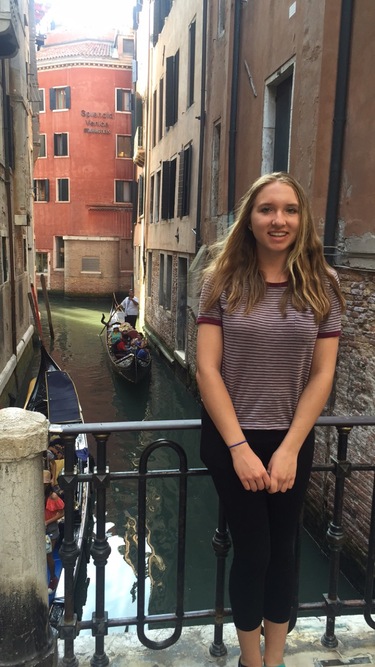
Travel Guide to Venice- Key Highlights
- Visit the beautiful city of Venice, which is made of water.
- Float through the lovely canals on gondolas and see amazing buildings.
- Experience Venetian art, including Renaissance pieces and modern works.
- Enjoy tasty Venetian dishes, from cicchetti to fresh fish.
- Find unique spots and avoid the busy crowds in the less known areas.
Introduction- Visit Venice, Italy
Venice is a city made of canals and filled with history. It invites travelers with its charming beauty. Get ready to be amazed by the wide Grand Canal. See the famous Rialto Bridge that links different areas. Don't miss the stunning sights at Piazza San Marco. Get ready to plan your dream adventure to the floating city with this complete travel guide to Venice.
Discovering Venice: A First-Timer's Overview
Venice is a unique city made up of many connected islands. It brings together art, history, and culture in a special way. There are famous sights and secret pathways, and each one tells a story about its rich background.
You will feel amazed by the lovely gondola rides on the canals, the stunning buildings along the water, and the lively squares filled with energy.
Why Venice Stands Out as a Must-Visit City
Venice is not just a city; it's a living example of human creativity and art. Its landscape is special, with canals instead of roads and buildings standing in the water. This gives it a magical feel.
Venetian art stands out with bright colors and fine details. It shows the city’s rich past and ties to the sea. From the amazing works of Titian and Tintoretto during the Renaissance to the modern pieces at the Peggy Guggenheim Collection, Venice keeps inspiring and fascinating art lovers everywhere.
Also, Venice’s public spaces, like the Rialto Bridge and Piazza San Marco, are more than just places for tourists. They are lively spots where locals and visitors meet, surrounded by great architecture.
How to Get to Venice
Venice can be accessed by various means. The most common way is by train, with Venice Santa Lucia being the main train station. If arriving by air, Venice Marco Polo Airport is the primary gateway. Another option is the Treviso Airport. Travelers can also reach Venice by road, but cars are not allowed in the city center, so parking outside and using public transportation is recommended for an authentic Venetian experience. Water taxis offer a scenic arrival option, directly into the Grand Canal.
Plane
Traveling to Venice by air is convenient, with the nearest airport being Marco Polo Airport (VCE), located about 13 km from the city center. It serves both domestic and international flights, making it accessible from major European and international cities. From the airport, you can reach Venice by taking a vaporetto (water bus), a private water taxi, or a land bus to Piazzale Roma, the entrance to the city’s car-free zone. For a more scenic and direct route, a water taxi takes you straight to your hotel or a nearby canal, offering a unique Venice arrival experience.
Boat
Arriving in Venice by sea is a memorable experience. Cruise ships and ferries dock at the Venice Cruise Terminal or San Basilio Port, offering travelers a unique approach to the city. Ferries also operate from nearby cities like Pula and Rovinj in Croatia. Once you dock, the city’s canals await, and you can easily take a vaporetto, water taxi, or walk into the heart of Venice. This method of travel adds a touch of romance and adventure, particularly for those arriving via cruise or ferry.
Bus
If you’re traveling on a budget, long-distance buses are an affordable option to reach Venice. Several bus companies like FlixBus operate routes that arrive at Piazzale Roma, the city's main bus terminal, just outside the car-free zone. From here, visitors can either walk into the city center or hop on a vaporetto or water taxi to reach their final destination. Buses are an excellent choice for travelers coming from other parts of Italy or Europe who prefer a low-cost alternative.
Car
While Venice itself is car-free, you can drive to the city and park at Piazzale Roma or Tronchetto, the main parking areas at the city’s entrance. From there, you’ll need to explore the city on foot or by water transport, as cars are not allowed inside Venice. The A4 motorway provides access to Venice from cities like Milan and Trieste, while the A27 connects the city with Belluno and northern Italy. While convenient for road trippers, parking fees can be high, so plan accordingly.
Train
Venice is well-connected to other Italian cities and European destinations via train, arriving at the Santa Lucia Railway Station. High-speed trains from cities like Rome, Florence, and Milan make traveling to Venice both efficient and scenic. Once you arrive at the station, you're immediately greeted by Venice's Grand Canal, with easy access to vaporetti (water buses) or water taxis that can take you to various parts of the city. The train is an ideal option for those looking for a fast, eco-friendly, and comfortable way to travel to Venice.
When I visited Venice, I was traveling from Rome. Therefore, I was able to purchase a cheap train ticket from Rome to Venice and then take a water taxi to get to my accommodation in Venice. This was a quick and cheaper option than flying from Rome to Venice. When choosing your travel route, I recommend checking with Rome2Rio to get an idea about your travel time and the cost. Rome2Rio link.
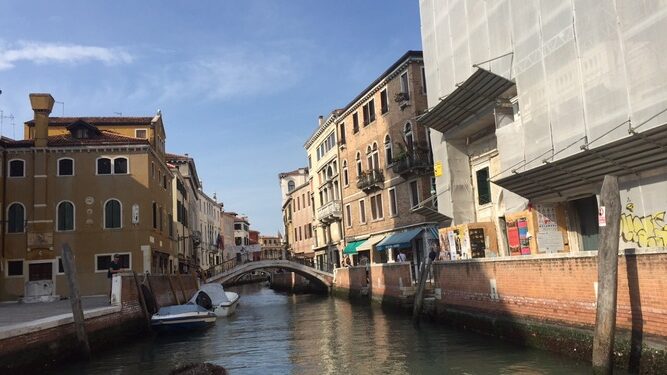
Where to Stay in Venice?
Venice is a city full of charm, history, and culture, and choosing the right area to stay in can make your visit even more magical. Each neighborhood, or sestiere, has its own unique character, from the bustling heart of San Marco to the quiet, local atmosphere of Cannaregio. Whether you’re seeking luxury, a family-friendly environment, or a more affordable option, Venice offers accommodations to suit all tastes. Here’s a guide to the different areas of Venice and the types of accommodations available in each.
Luxury Accommodations in San Marco
If you’re looking to stay in the heart of Venice, San Marco is the most iconic and prestigious district, home to St. Mark’s Square, Doge’s Palace, and Rialto Bridge. For those wanting a luxurious stay, the area offers several 5-star hotels, such as the Aman Venice, known for its palatial grandeur, or the Gritti Palace, with stunning views of the Grand Canal. Boutique hotels like Hotel Danieli also offer elegance and historic charm, ensuring an opulent experience. San Marco is perfect for those who want to be close to the city’s top attractions, though it tends to be pricier and busier than other areas.
Boutique and Family-Friendly Stays in Dorsoduro
For travelers seeking a quieter, artsy atmosphere, Dorsoduro is an excellent choice. Known for its galleries, including the Gallerie dell’Accademia and the Peggy Guggenheim Collection, Dorsoduro offers a peaceful escape just across the Grand Canal from the tourist-heavy areas. Accommodations here range from charming boutique hotels like Ca’ Pisani to family-friendly apartments that provide more space for those traveling with kids. Hotel Nani Mocenigo Palace offers a balance of luxury and comfort with its Venetian-style decor and beautiful canal views. Dorsoduro’s tranquil ambiance makes it ideal for couples and families wanting a more relaxed stay.
Affordable Options in Cannaregio
For a more budget-friendly stay without sacrificing authenticity, Cannaregio is a local, residential area that offers a more laid-back vibe. Cannaregio is home to the Jewish Ghetto, one of the oldest parts of Venice, and has a selection of mid-range hotels and affordable guesthouses like Hotel Vecellio and Locanda Herion. This district is perfect for travelers who want to explore Venice like a local, with its quiet canals, artisan shops, and authentic Venetian restaurants. Plus, it’s well-connected to major sites via the vaporetto. Cannaregio is a great choice for those wanting to experience Venice's charm at a more reasonable price.
Romantic and Secluded Stays in Castello
For a more romantic and off-the-beaten-path experience, consider staying in Castello, Venice’s largest district, located east of San Marco. Castello offers a mix of historical sites like the Arsenale and hidden gardens, perfect for a quiet escape from the crowds. Accommodations here tend to be more intimate, with boutique hotels like Hotel Paganelli or smaller bed-and-breakfasts that offer a cozy, romantic atmosphere. This area is ideal for couples looking for a secluded retreat while still being close to the main attractions. Castello offers a glimpse of traditional Venetian life, with quiet streets and beautiful, less-visited canals.
Unique Island Retreats in Giudecca
For those wanting a unique and tranquil stay, the island of Giudecca offers a peaceful retreat just across the lagoon from the main island of Venice. This area is home to luxury hotels like the Belmond Hotel Cipriani, known for its exclusivity, stunning views of Venice, and beautiful gardens. Giudecca provides a more secluded and serene experience, perfect for honeymooners or travelers seeking a true escape. It’s also less crowded than central Venice, with its own restaurants, local markets, and scenic waterfront. A short vaporetto ride connects Giudecca to the bustling areas of Venice, giving visitors the best of both worlds.
Charming Stays in San Polo and Santa Croce
San Polo and Santa Croce are two centrally-located districts known for their historic markets, including the famous Rialto Market. These areas offer a mix of mid-range and affordable accommodations, such as charming guesthouses and smaller hotels like Ca’ San Polo or Hotel Antiche Figure. Staying here offers easy access to the Rialto Bridge and Venice’s main attractions, while still maintaining a more local feel. These neighborhoods are perfect for visitors wanting to explore the heart of Venice without the crowds of San Marco. Their central location makes them convenient for sightseeing and dining.
When I visited Venice, we stayed in a small hotel outside of the city center. We were able to easily walk between the main tourist attractions while being out of the main nightlife noise. This helped us save money and also get quality sleep.
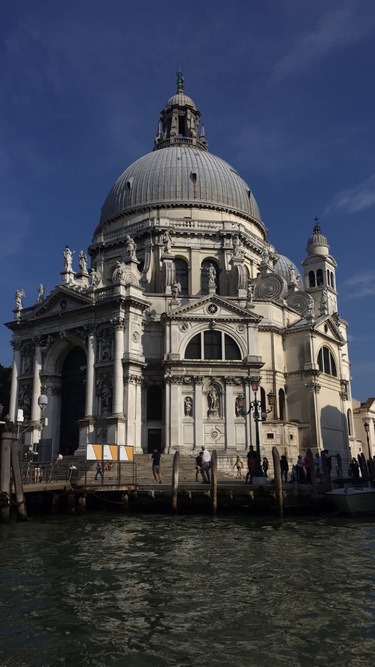
Guides to Italy
How to Get Around Venice
Vaporetto (Water Bus)
The Vaporetto is Venice’s main form of public transportation and one of the best ways to get around the city’s intricate canal system. Operated by ACTV, these water buses run on set routes along the Grand Canal and connect various islands, including Murano, Burano, and Lido. Vaporetti are a convenient and affordable way to explore Venice, with stops at major attractions like Piazza San Marco, Rialto Bridge, and Accademia. Tickets can be purchased at vaporetto stops or online, with single rides or multi-day passes available depending on your stay.
Water Taxi
For a more private and luxurious way to travel around Venice, water taxis offer a direct and comfortable alternative to public Vaporetti. While more expensive, water taxis can take you directly to your hotel, especially those with canal-side entrances, and provide a faster and more personalized experience. Water taxis are available at major entry points like the airport, train station, and cruise terminal, and can also be booked for sightseeing tours around the canals. The convenience and exclusivity make water taxis a great option for those wanting to navigate Venice in style.
Traghetti
For a quick and budget-friendly way to cross the Grand Canal, Traghetti are a practical solution. These are larger gondola-like boats that shuttle passengers from one side of the Grand Canal to the other at various crossing points. Traghetti are used mainly by locals and are a fast, affordable way to avoid walking to the nearest bridge. While not a scenic experience like a traditional gondola ride, it’s a practical and authentic way to navigate Venice’s waterways for just a small fare.
Walking
Venice is a city best explored on foot, as many areas are pedestrian-only, and much of the city’s charm lies in its winding streets, bridges, and piazzas. Most of the city’s major landmarks, like St. Mark’s Square, Rialto Bridge, and the Doge’s Palace, are within walking distance of one another. As you wander the narrow streets and cross picturesque bridges, you’ll discover hidden churches, local shops, and quiet squares away from the tourist crowds. Walking is also essential in many areas where canals don’t provide water transport access. Oh and you don't have to worry about getting hit by cars.
What to Do in Venice, Italy
Exploring Venice offers a myriad of captivating experiences, including a memorable walking tour of the best places to discover. Embark on a Vaporetto ride along the Grand Canal, or visit iconic landmarks like Piazza San Marco and Ponte di Rialto. Immerse yourself in Venetian art at Basilica San Marco and the Doge’s Palace. Discover contemporary art at the Peggy Guggenheim Collection or indulge in local cuisine with Cicchetti. Uncover intriguing history at the Jewish Ghetto or enjoy a gondola ride through the picturesque canals. Venice truly has something for every traveler!
Piazza San Marco
Discover the heart of Venice at Piazza San Marco, a stunning square known as "the drawing room of Europe." Framed by iconic landmarks like Basilica San Marco and the Campanile di San Marco bell tower, this bustling hub offers a perfect blend of history and culture. Explore the grandeur of Doge’s Palace or indulge in Venetian coffee at a cozy café. Don't miss the enchanting live music performances or simply savor the breathtaking views of the Grand Canal. Piazza San Marco is a true embodiment of Venice’s charm.
Ponte di Rialto
Ponte di Rialto: Crossing the Grand Canal, Ponte di Rialto stands as a historic icon in Venice, offering breathtaking canal views and bustling activity. This renowned bridge, a magnet for tourists, connects San Marco and San Polo, near the famous Teatro La Fenice and the Santa Maria della Salute. Originally a bustling marketplace, it now houses a variety of shops, a perfect spot to explore Venetian culture through souvenir shops and local vendors. The bridge's architecture and charm make it a must-visit for any traveler in Venice.
Basilica San Marco
Marvel at the opulent Byzantine architecture of the Basilica di San Marco, a masterpiece showcasing intricate mosaics and ornate designs. Dedicated to Saint Mark, this iconic basilica and the nearby Basilica di Santa Maria Gloriosa dei Frari boast a rich history intertwined with Venetian culture. Explore the gilded interior adorned with relics and statues, and ascend to the terraces for panoramic views of Piazza San Marco. Witness the blend of Eastern and Western influences in this architectural gem, making it a must-visit for lovers of art and history.
Doge's Palace
Doge’s Palace, also known as Palazzo Ducale, stands as a testament to Venetian history and power. This iconic landmark, located in St. Mark’s Square, showcases stunning Venetian Gothic architecture. Explore the rich history within the walls of this palace, once the residence of the Doge of Venice, the city's supreme authority. On a guided tour, you can admire the lavish chambers, intricate artworks by renowned artists, and the infamous Bridge of Sighs. A visit to Doge’s Palace (Palazzo Ducale) offers a glimpse into Venice's political and cultural past.
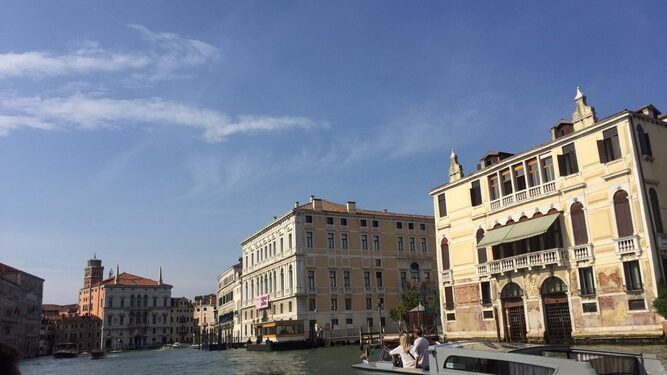
Gallerie dell’Accademia
Gallerie dell’Accademia showcases an impressive collection of pre-19th-century Venetian art, including notable examples of Renaissance art, attracting art enthusiasts worldwide. Located in an impressive 18th-century building, the gallery houses works by prominent artists like Titian, Veronese, and Bellini. Its extensive collection offers a deep dive into the rich artistic heritage of Venice, featuring masterpieces that depict the city’s cultural essence. A visit to this museum provides insight into the evolution of Venetian art and is a must for those seeking a comprehensive artistic experience in Venice.
Museo del Vetro
Nestled within Venice is the intriguing Museo del Vetro, showcasing the city's rich glassmaking heritage on the island. This museum unveils the secrets behind the intricate art of glassblowing, a tradition deeply rooted in Venetian culture. Visitors can admire exquisite glass creations dating back centuries and witness skilled artisans crafting delicate masterpieces. Exploring Museo del Vetro offers a unique glimpse into the craftsmanship and innovation that define Venice's artistic landscape, making it a must-visit destination for art enthusiasts and history buffs alike.
Gondola Cruises
Experience the essence of Venice with enchanting gondola cruises, including a Venice small group gondola ride along the grand canal. Glide past iconic landmarks like the Rialto Bridge and the Doge's Palace, immersing yourself in the city’s rich history. These leisurely rides offer a unique perspective of Venice, showcasing its romantic allure and captivating architecture. Enjoy the serenade of skilled gondoliers as you meander through picturesque waterways, creating unforgettable memories of this magical city. Indulge in a gondola ride for an authentic Venetian experience like no other.
Carnevale
Immerse yourself in the magical world of Carnevale in Venice, a festival dating back to the Middle Ages, celebrated with exquisite masks, vibrant costumes, and lively parades. This annual extravaganza, culminating on Shrove Tuesday, transforms Venice into a fantastical realm of revelry and enchantment. Join the masquerade balls, witness the thrilling water parade along the Grand Canal, and savor traditional Venetian delicacies amidst the festive atmosphere. Experience the allure of Carnevale, a time when Venice truly comes alive with joy and festivity.
Conclusion
In conclusion, Venice is a city full of charm and history. You can enjoy its beautiful canals and famous sites like Piazza San Marco and Doge’s Palace. Don't miss out on tasting the local food, as it is delicious. To have a great time, pack your essentials, know the weather, and use public transport or walk around the city. Whether it’s your first time or you’ve been here before, Venice offers a fantastic travel experience. This city combines culture, stunning buildings, and tasty food. Plan your trip well with this Travel Guide to Venice, enjoy the beauty of Venice, and make memories that will last a lifetime.
Frequently Asked Questions
Is Venice, Italy, Safe for Tourists?
Yes, Venice is mostly a safe place for tourists. It has a low crime rate. Like any other city, you should stay aware of your surroundings. This is important, especially in crowded public spaces and at night.
How Many Days Do You Need for Venice?
To fully experience Venice, plan for at least 3 days. This allows time to explore the main attractions like St. Mark’s Square, Doge’s Palace, and take a gondola ride. Additionally, it provides a chance to savor the local cuisine and immerse in the city's unique charm.
What is the Best Month to Go to Venice?
The best month to visit Venice is during spring or fall when the weather is pleasant, and the city is less crowded. Months like April, May, September, and October offer a perfect balance of good weather and fewer tourists.
Travel Tip
If you would like to visit Venice during Carnevale di Venezia, I highly recommend booking your accommodations and activities a few months in advance because the prices increase significantly and sell out.
My Playlist for Venice, Italy
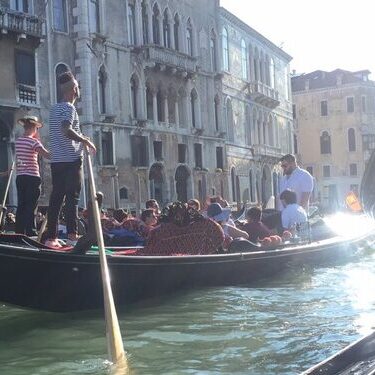
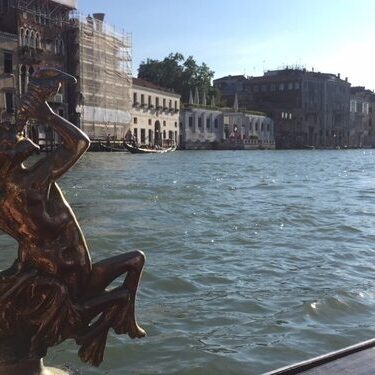
Recommended Reads
Explore Yosemite National Park: A Nature Lover’s Paradise
Key Highlights Next, let’s dive into what makes Yosemite National Park an unmatched treasure of the United…
Local Favorites: What Food to Eat in California
Key Highlights Introduction California, also called the golden state, is a great place for people who love…
Discover the 20 Best Places to Visit in California Now
Key Highlights Introduction California is a place that has something for everyone. You can find natural beauty…



